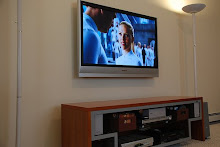The list below highlights the most important differences between these two flat panel display technologies:
Size: For the time being, collision between plasma television and LCD TV occur in the 40 to 50 inch screen range. In reality, most LCD TVs top out at around 50 inch; larger screen sizes are also available though choice is still very much limited. This means that for anything larger than 50-inch, a plasma display is your only real option if what you are after is a direct-view TV system. On the other hand, at the smaller end of spectrum, namely 15” to 36” TVs, LCD is the way to go if what you want is something stylish and slim (at under 4-inches in depth).
Price: Here, the playing field is leveling at a fast rate. Up to very recent, plasma was the obvious choice for all screen sizes where collision between these two technologies occurs; this is no longer the case. In general, plasma still leads by a good margin only at the bigger screen sizes – 50-inch and upwards. At the smaller end (up to 44-inch), the price advantage when it comes to plasma vs LCD TV sets, starts to shift more towards LCD TVs.
Overall Picture Performance: Both plasma and the latest TFT-LCD flat panel displays are capable of producing excellent picture quality – with bright, crisp clear images. However, plasma flat panel displays are more suitable for basic home theater usage than LCD. The gas cell structure within a plasma display is such that there is no light leaking between adjacent cells (or pixels). This renders plasma displays capable of displaying deeper blacks – hence more suited to television and movie scenes where lots of dark and light content is shown simultaneously.
To find out more, please refer to the detailed guides appearing on the same site at http://www.practical-home-theater-guide.com/plasma-vs-lcd-TV.html.

LCD TV
Subscribe to:
Post Comments (Atom)
0 comments:
Post a Comment